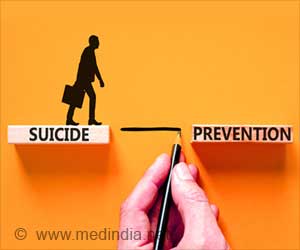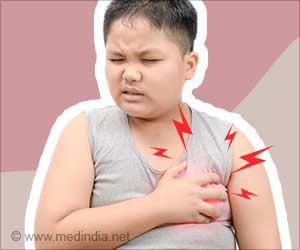Despite extensive research debunking the myth, media outlets and public perceptions continue to link the holiday season with an increase in suicides.

Suicide Rate Is Low During the Holidays, but the Holiday-Suicide Myth Persists
Go to source).
‘Did You Know?
Suicide is the third leading cause of death among 15–29-year-olds, more than 720,000 people die due to suicide every year. #medindia #suicide #youth’





Suicide is the third leading cause of death among 15–29-year-olds, more than 720,000 people die due to suicide every year. #medindia #suicide #youth’
Advertisement
Breaking Down Media Trends on Suicide Myths
Last year, over the 2023-24 holiday season, a search of media stories found 26 newspaper stories linking the holidays and suicide, of which 15 (58%) upheld the myth and 11 (42%) debunked it.“For more than a generation, we’ve been analyzing how the news media report on the mistaken belief that the suicide rate increases over the holiday season,” said Dan Romer, research director of the Annenberg Public Policy Center (APPC) of the University of Pennsylvania. “The persistence of this myth suggests that its hold on the public’s imagination is difficult to undo. Supporting the myth serves no useful purpose and may have a contagious effect on vulnerable people who are experiencing a crisis and contemplating suicide during the holidays.”
Advertisement
The December Misconception
The news media are not the only ones who commonly get it wrong. In a nationally representative survey we conducted in 2023, 4 out of 5 adults incorrectly picked the month of December over several other months as the “time of year in which the largest number of suicides occur” – even though the other months provided as potential choices typically have much higher suicide rates.Examples of News Stories Spreading the Myth
Some of the newspaper accounts supporting the myth last year ran in local, relatively smaller publications. Some cited the mistaken beliefs of well-meaning community authority figures. All of these promoted the false myth:A Denver Post story on Dec. 8, 2023, concerning four murder-suicides in two weeks, quoted a local social-services official as saying that the “ongoing holiday season could be part of the reason why.”
A columnist for the Advertiser-Gleam, in Guntersville, Ala., wrote on Nov. 28, 2023, about taking his annual trip to cut the Christmas tree. The columnist wrote: “Statistics inform us that during the holiday season the number of suicides increase. It is easy to see why. Each year we mark another year has passed and we are a year older. Each year brings the loss of some we love and new additions that we have come to love…”
Northern Sentry, the Minot Air Force Base (N.D.) newspaper, published a story from Air & Space Forces Magazine saying that the Air Force base was investigating the deaths of three airmen in one month. The Dec. 1, 2023, story quoted a military spouse as telling the Minot Daily News that the “holidays are such a vulnerable time for people, where we have some of the highest rates of suicide in general.”
Myth-Busting in the Media: Positive Examples
Our media analysis also found examples of stories that debunked the myth. Among these:In the Dec. 21, 2023, story, “These tips will help you navigate your holiday blues,” the weekly New Pittsburgh Courier quoted a mental health professional from the Washington University School of Medicine, in St. Louis, who said, “It’s unfortunate that the myth that suicide rates increase around the winter holidays continues since studies have shown that’s just not the case… let’s not sensationalize the risk of suicide, or give people the impression that this is a time when more people are dying by suicide.” The story added: “In her view, emphasizing this false risk can be harmful, potentially influencing those who are struggling and making it seem like a more prevalent occurrence.”
A column by Dr. Barton Goldsmith in the Grand Island (Neb.) Independent, on Dec. 9, 2023, begins: “There has been a long-standing myth that suicide rates increase over the holiday season. According to the Mayo Clinic this is completely false. What is true is that the rates of depression and stress do increase. Here are 10 solid tools to help you and deal if Santa also brings you some holiday blues.”
“As these two stories observe, the holiday blues are a real phenomenon that might require attention to loved ones who might be sad at this time of year,” Romer said. “People may feel sadness around the holidays for many different reasons. There’s no need to give people the false impression that others are dying by suicide, when that could actually lead to contagion.”
Guidelines for Responsible Reporting
As we’ve noted in our annual news releases on this research, national recommendations for reporting on suicide advise journalists not to promote information that can increase contagion, such as reports of epidemics or seasonal increases, especially when the claim has no basis in fact. The recommendations, which were developed by journalism, mental health, public health, and suicide-prevention groups, along with the Annenberg Public Policy Center, say that reporters should consult reliable sources such as the Centers for Disease Control and Prevention (CDC).Journalists helping to dispel the holiday-suicide myth can also provide valuable resources for readers who are in or know of someone who is in a potential crisis, including those at the Suicide Prevention Resource Center, the National Institute of Mental Health, and the Substance Abuse and Mental Health Services Administration, or SAMHSA.
Seasonal Trends in Suicide Rates
CDC data show that the months with the lowest average daily suicide rates are typically in the fall and winter: November, December, and January.In 2023, the last full year for which CDC data are available, December had the lowest average daily suicide rate – it was 12th among the months, and November was 11th. January came in 5th. The months with the highest rates were August (1st) and July (2nd).
The Misleading Link Between Winter and Suicide
This seasonal pattern for the suicide rate holds true in Australia, too. Romer last year conducted an analysis of average daily suicide rates over a dozen years in Australia. He found that the winter months in Australia had lower suicide rates, similar to the United States. Since Australia is in the southern hemisphere, the month with the lowest average daily suicide rate was June, which is the beginning of winter there.In releasing the Australian data last year, Romer said, “This helps to explain the lower suicide rate we see here in December – it’s mostly due to the onset of the winter season.
Psychologically, because of the shorter and gloomier days of winter in the U.S., we tend to associate them with suicide. But that’s not what happens in reality.”
The 988 Suicide & Crisis Lifeline
A major government initiative to help vulnerable people occurred in July 2022, when the National Suicide Prevention Lifeline was renamed the 988 Suicide & Crisis Lifeline, and 988 was implemented as its three-digit nationwide phone number. Annenberg Public Policy Center surveys have found that familiarity with the 988 number is growing slowly, and still too few people know it.As of the September 2024 nationally representative panel survey, just 15% of U.S. adults are familiar with the suicide lifeline, up from 11% in August 2023. These are people who said they were aware that there is a suicide lifeline number and, in an open-ended format, said it is 988.
“The help that can be found at the 988 helpline can only save lives if those in need and their loved ones and friends know the number,” Kathleen Hall Jamieson, director of the Annenberg Public Policy Center, said last month when this finding was released. “When 988 is as readily recalled as 911, the nation will have cause to celebrate.”
Reference:
- Suicide Rate Is Low During the Holidays, but the Holiday-Suicide Myth Persists - (https://www.annenbergpublicpolicycenter.org/suicide-rate-is-low-during-the-holidays-but-the-holiday-suicide-myth-persists/)
Source-Eurekalert











